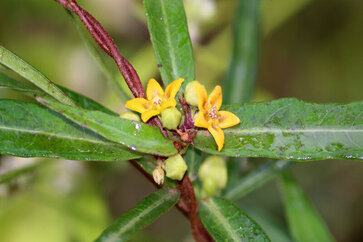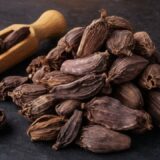Top 10 Health Benefits of Mint (Pudina) Leaves You Need to Know
Mint, known scientifically as Mentha, is a popular herb widely used for culinary, medicinal, and aromatic purposes. It is a fast-growing plant that thrives in temperate climates and is recognized for its refreshing, cooling flavor and distinct, aromatic fragrance.
The most common varieties include peppermint (Mentha × piperita) and spearmint (Mentha spicata), with the leaves being the most commonly used part. Mint plants have broad, jagged leaves with a vibrant green color and produce small purple or white flowers.
Mint in Ayurveda
In Ayurveda, mint (known as Pudina in Hindi) holds a significant place due to its cooling, calming, and digestive properties.
It is often used in Ayurvedic formulations to balance the body’s doshas, particularly the Pitta dosha (associated with heat and inflammation).
Mint is considered an effective herb for promoting digestion, relieving nausea, and supporting overall well-being. It is often included in Ayurvedic treatments to pacify imbalances and to treat various ailments, from indigestion to headaches.
Types of Mint Used in Ayurveda
In Ayurveda, mint is highly valued for its cooling and digestive properties. The most commonly used varieties of mint in Ayurvedic practices include:
1. Spearmint (Mentha spicata):
Spearmint is used for its mild flavor and cooling properties. It is commonly recommended for balancing Pitta dosha due to its ability to reduce heat and inflammation in the body. Spearmint is known for its calming effects on the digestive system, often used to alleviate nausea, indigestion, and headaches.
2. Peppermint (Mentha piperita):
Peppermint has a stronger, more intense flavor and is known for its invigorating properties. In Ayurveda, peppermint is particularly useful in treating Vata and Kapha imbalances, aiding in the relief of respiratory conditions like congestion and coughs. Its menthol content makes it a popular choice for soothing the digestive tract, reducing bloating, and easing muscle pain.
Both varieties are used in Ayurvedic medicine for their therapeutic properties, including in teas, essential oils, and pastes.
Mint is often incorporated into various herbal formulations for digestion and skin health and as a natural remedy for headaches and respiratory ailments.
Ayurvedic Properties of Mint Leaves
- Rasa (Taste): Cool, slightly bitter, and pungent.
- Virya (Potency): Ushna (Hot).
- Vipaka (Post-digestive effect): Katu (Pungent).
Dosha Impact:
- Balances Vata and Kapha doshas.
- Aggravates Pitta dosha if consumed in excess.
Effect on Agni (Digestive fire): Stimulates and strengthens the digestive fire (Agni).
Top 10 Health Benefits of Mint (Pudina) Leaves
Below are the top 10 health benefits of Pudina (mint) leaves and their diverse applications in promoting both physical and mental wellness.
1. Prevents Headaches
Mint is widely recognized for its ability to reduce headache symptoms due to its cooling and soothing effects. The menthol present in mint helps relieve tension and stress that contribute to headaches, offering an easy and natural remedy.
- Menthol-rich Aroma: The strong, refreshing scent of mint, particularly its menthol content, has natural analgesic properties that help reduce headache pain. Inhaling mint or applying its aroma through balms and oils can significantly alleviate headache symptoms by relaxing the muscles and reducing tension.
- Topical Applications: Applying mint-infused creams, balms, or oils directly to the forehead or neck is a common practice for relieving headaches. Menthol’s cooling sensation and pain-relieving properties can provide immediate comfort and relief from both tension headaches and migraines.
- Ayurvedic Remedies: In Ayurvedic medicine, mint has been used for centuries to relieve headaches. Its cooling effect is believed to calm the excess heat and tension in the body, which is often a primary cause of headaches in Ayurvedic practices. Mint-based remedies, such as mint-infused oils or tea, are commonly recommended to alleviate head pain.
2. Cures Pimples and Skin Care
Mint’s potent antiseptic and anti-inflammatory properties make it an excellent remedy for skin issues like acne, pimples, and blemishes. Whether used topically or as part of skincare products, mint provides deep cleansing and skin healing benefits.
- Antiseptic Properties: Mint contains volatile oils like carvone and limonene, which possess antiseptic qualities that help cleanse the skin and prevent bacterial infections. When applied to the skin, mint can kill harmful bacteria and help reduce acne outbreaks.
- Anti-inflammatory: Mint has powerful anti-inflammatory properties that can soothe irritated skin, reduce redness, and alleviate discomfort from acne or other skin conditions. The cooling sensation it provides also calms the skin, reducing swelling and promoting healing.
- Cosmetic Use: Mint extracts are commonly found in a variety of cosmetic products such as scrubs, face washes, cleansers, and lip balms. These products harness the natural healing power of mint to help refresh and rejuvenate the skin, leaving it soft, smooth, and acne-free.
3. Prevents Asthma
Mint’s menthol content is highly effective in easing breathing difficulties, making it a natural remedy for asthma and other respiratory conditions. It helps open up the airways, allowing easier airflow and alleviating symptoms of asthma attacks.
- Menthol Action: The menthol present in mint has natural bronchodilator properties, which help relax the muscles around the airways and open them up. This makes breathing easier for asthma patients and helps reduce coughing and wheezing during asthma attacks.
- Soothes the Throat: Mint’s cooling properties also help soothe the throat, reducing irritation and inflammation that often accompany asthma and other respiratory conditions. This makes it an excellent herb for soothing the throat during cold or allergy season.
- Aromatherapy: Mint essential oils are commonly used in aromatherapy to treat asthma and other respiratory issues. Inhaling mint vapors through diffusers or applying a few drops to the chest can act as a natural decongestant, providing comfort and relief to asthma sufferers.
4. Cures Stomach Ache & Aids Digestion
Mint plays an essential role in improving digestion and soothing stomach discomfort. It stimulates digestive enzymes and promotes the efficient breakdown of food, making it beneficial for anyone experiencing indigestion or bloating.
- Digestive Aid: Mint has been shown to stimulate the production of digestive enzymes, which helps break down food more efficiently and improves overall digestion. It is particularly effective in relieving symptoms of indigestion, bloating, and nausea.
- Antioxidant Benefits: Mint’s antioxidant-rich properties neutralize free radicals in the stomach and digestive system, preventing inflammation and promoting a healthy digestive environment. This also helps reduce discomfort from bloating or gas buildup in the stomach.
- Appetizer Benefits: Mint is known for its ability to stimulate appetite, making it an excellent addition to meals. In traditional Indian medicine, mint is commonly consumed after meals to aid in digestion, prevent gastric discomfort, and improve overall gut health.
5. Helps in Weight Loss
Mint is a natural stimulant that can aid in weight loss by enhancing metabolism and promoting fat breakdown. By incorporating mint into your diet, you can encourage the body to burn fat more effectively, leading to healthier weight management.
- Boosts Metabolism: Mint helps increase the rate at which your body metabolizes fat, thanks to its ability to stimulate digestive enzymes. These enzymes help break down food and absorb nutrients more efficiently, promoting the burning of fat as energy rather than storing it.
- Appetite Suppressant: Mint’s refreshing taste and aroma help control cravings and reduce overall food intake. The cooling effect of mint can trick the body into feeling fuller, thus reducing the urge to snack or overeat.
- Natural Detoxifier: Regular consumption of mint aids in detoxifying the body by promoting the elimination of waste products and excess toxins. This supports the body’s ability to regulate weight and stay lean by flushing out harmful substances.
6. Improves Memory and Cognitive Function
Research has shown that mint can improve memory retention and cognitive performance. Regular consumption of mint, whether through mint tea or mint gum, can help boost brain function and improve mental clarity.
- Cognitive Stimulation: The invigorating effects of mint can stimulate brain function, improve memory retention, and enhance mental alertness. Studies have shown that the use of mint has a direct impact on cognitive tasks such as learning and concentration.
- Chewing Mint: Chewing mint gum or simply chewing on mint leaves has been found to improve cognitive performance, including memory retention and mental clarity. This makes mint a valuable herb for students or professionals looking to boost focus and brainpower.
- Increased Oxygen Flow: The stimulating effects of mint also increase oxygen flow to the brain, improving concentration and reducing mental fatigue. As a result, mint is a natural and effective aid for mental clarity during tasks that require focus and problem-solving.
7. Relieves Depression and Fatigue
Mint is a natural stimulant known for its mood-lifting properties. Whether consumed as tea or applied as an essential oil, mint can help alleviate stress, fatigue, and feelings of anxiety, providing a natural solution for mental exhaustion.
- Mood Enhancement: Mint’s uplifting aroma has been shown to relieve feelings of anxiety, depression, and stress. The scent of mint is known to refresh the mind, reduce mental fatigue, and improve overall mood by stimulating the brain’s serotonin production.
- Aromatherapy Benefits: Inhaling mint essential oils or using mint-based products like diffusers can promote relaxation, reduce stress, and combat fatigue. This makes mint an excellent tool for maintaining emotional balance and mental well-being.
- Mint Oil for Relaxation: Mint essential oils, when applied to key pressure points on the body, such as the temples or neck, can help relax the nervous system and alleviate feelings of stress. For better sleep, placing mint oil on your pillow before bedtime can improve restfulness and help fight insomnia.
8. Soothes Insect Bites
Mint oil is a natural remedy for insect bites, providing cooling and soothing effects on the skin. Its anti-inflammatory and antibacterial properties help reduce itching, swelling, and pain caused by bites or stings.
- Cooling Effect: Mint’s cooling sensation relieves itching and irritation caused by insect bites, rashes, or other skin reactions. Applying mint-based lotions or oils can instantly provide relief and comfort to the affected area.
- Anti-inflammatory and Antibacterial: Mint’s natural anti-inflammatory properties help reduce swelling and redness, while its antibacterial properties prevent infection from developing at the site of the bite. This makes mint a useful ingredient in skin care products that treat insect bites and minor irritations.
- Natural Remedy: Fresh mint leaves or peppermint oil can be applied directly to mosquito bites or other insect stings to calm the skin. The natural cooling properties of mint numb the affected area, helping to stop the pain and itchiness temporarily.
9. Relieves Menstrual Cramps
Mint leaves provide relief from menstrual cramps by relaxing the muscles in the abdomen and easing pain associated with menstruation. Mint’s anti-spasmodic properties make it an effective remedy for soothing menstrual discomfort.
- Anti-Spasmodic Action: The natural anti-spasmodic properties of mint help relieve the muscle contractions and cramps associated with menstruation. Drinking mint tea or using mint oil can help alleviate pain and reduce the intensity of cramps.
- Pain Relief: Drinking hot mint tea or applying a warm compress with mint oil to the lower abdomen can provide comfort during the menstrual cycle. Mint helps relax the muscles and reduce discomfort from cramps, offering a natural solution for pain relief.
- Hormonal Balance: Mint can also help regulate hormonal balance during menstruation, reducing the severity and frequency of cramps. This makes it an effective and natural remedy for those experiencing painful or irregular periods.
10. Relieves Toothaches
Mint’s numbing and soothing effects make it a valuable natural remedy for toothaches. The menthol content in mint helps alleviate tooth pain and provides relief from discomfort until further treatment can be administered.
- Natural Numbing Effect: Peppermint contains menthol, which provides a natural numbing effect, helping to alleviate toothache pain. Applying peppermint oil or using mint-infused oral products can temporarily reduce discomfort in the affected area.
- Pain Relief Products: Mint is a key ingredient in many dental products, such as toothpaste, mouthwashes, and gels, and is known for its pain-relieving and refreshing properties. These products work to numb the pain and promote oral health.
- Cold Compress: Applying a cold peppermint tea bag directly to the affected area provides an additional cooling effect, which can reduce pain and inflammation. The menthol in peppermint works as a natural pain blocker, desensitizing the area and providing comfort.
Mint leaves are not just a popular culinary ingredient but also offer numerous health benefits. They help soothe digestive issues, promote cognitive function, and support overall well-being. Whether in teas, topically, or fresh, mint is a versatile herb that can enhance your health in many ways.

























Great article. I love mint but I didnt know about the benefits of it. Thank you!